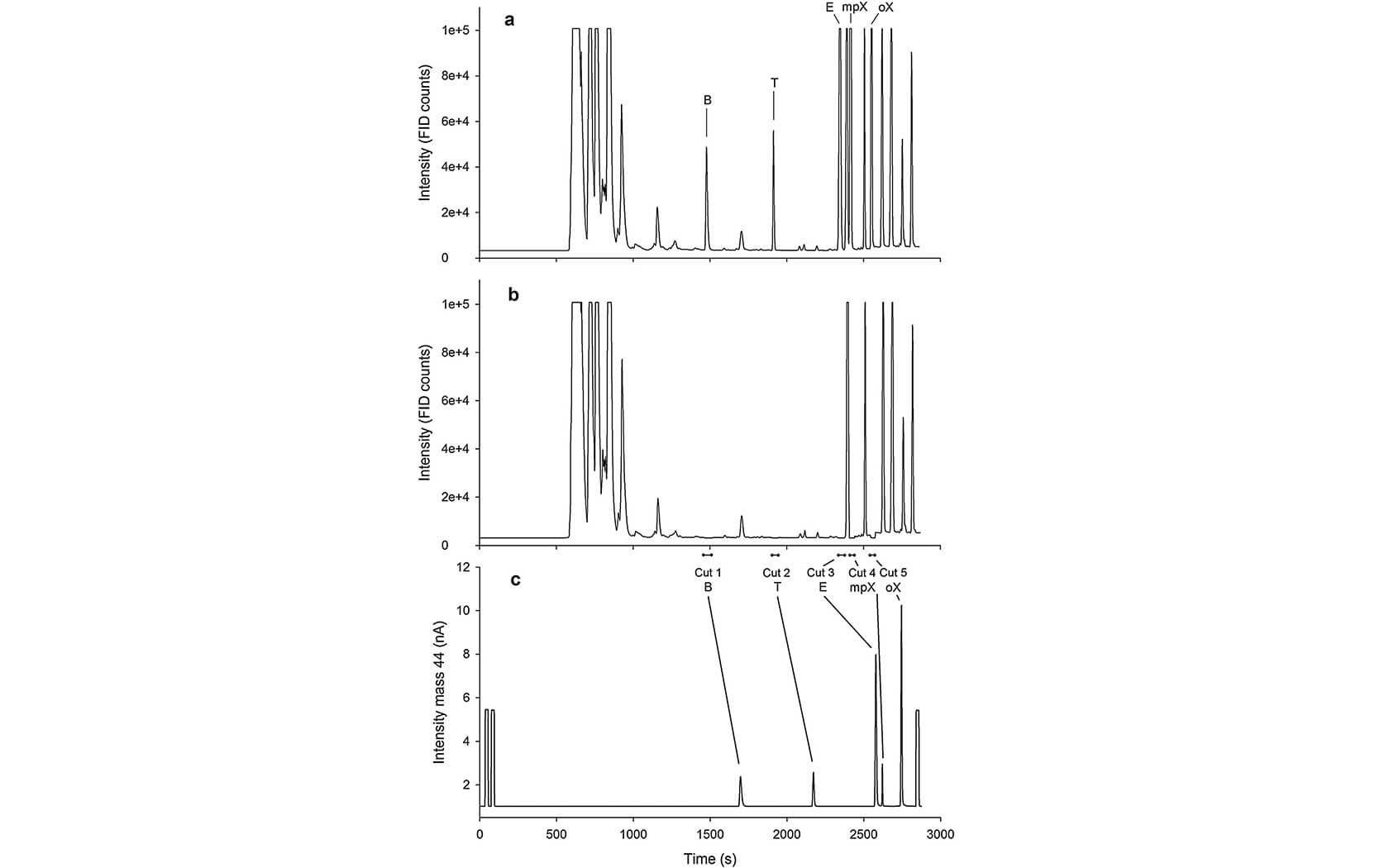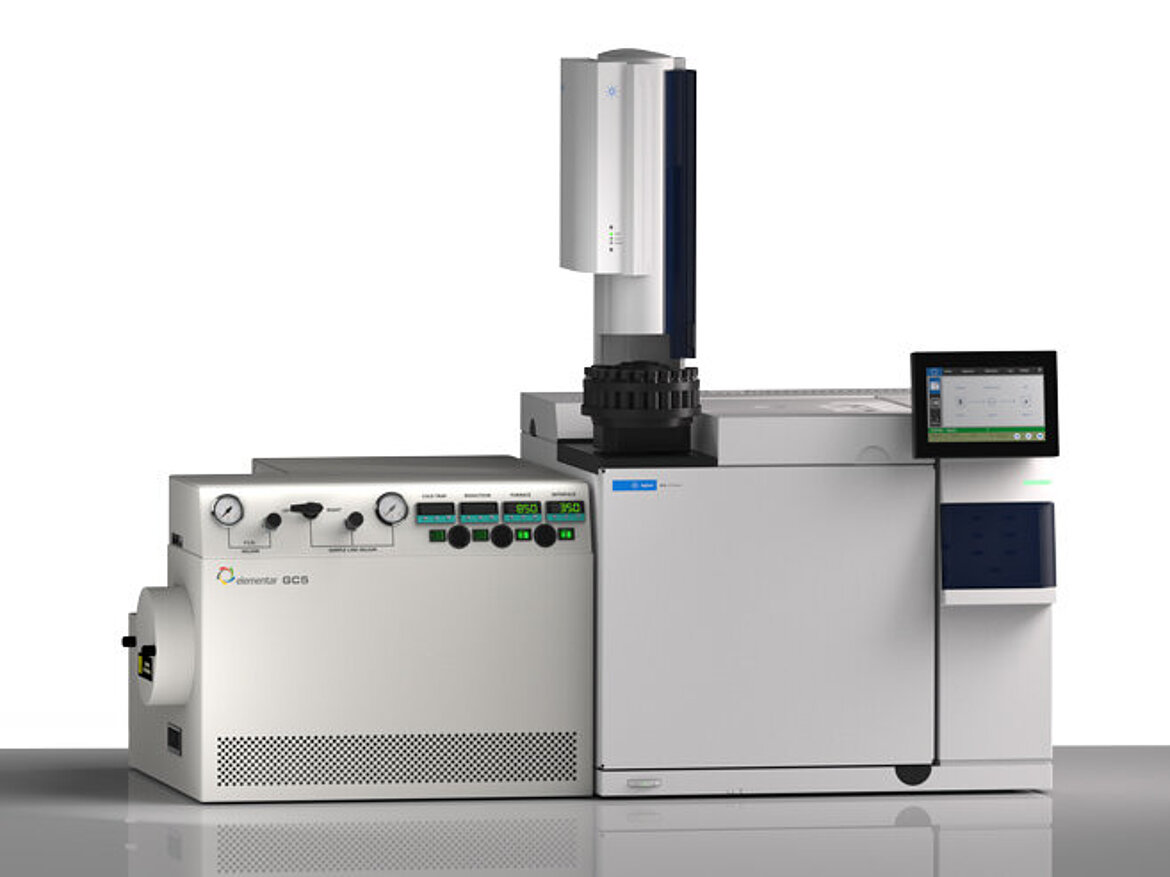Heart-cutting two-dimensional gas chromatography–isotope ratio mass spectrometry analysis of monoaromatic hydrocarbons in complex groundwater and gas-phase samples
Violaine Ponsin1, Timothy E. Buscheck2, Daniel Hunkeler1
1Centre of Hydrogeology and Geothermics (CHYN), University of Neuchâtel, 2000 Neuchâtel, Switzerland
2Chevron Energy Technology Company, San Ramon, CA 94583, United States
Compound-specific isotope analysis (CSIA) is a technique used to evaluate the origin and fate of petroleum hydrocarbons in the environment. Due to the complexity of samples tit can be challenging to obtain accurate and precise isotope values. To overcome this issue, a two-dimensional heart-cutting gas chromatograph was hyphenated to an isotope ratio mass spectrometer (GC-IRMS) to develop a method to analyze carbon isotopes in benzene, toluene, ethylbenzene, and xylenes (BTEX) in complex environmental samples. The method was tested with samples from field sites for which 1D-GC-C–IRMS under optimized conditions failed to yield sufficient chromatographic resolution. The first step of the 2D-GC method development was to analyze two samples containing a high load of matrix with different combinations of columns in the first and second dimensions to determine the combination of columns and oven program giving the best separation for the BTEX. The performance of this new method was then proven to be efficient with standards. Finally, samples from two field sites were analyzed.
After various tests with different combinations of columns in the first and second dimensions, a complete separation of both benzene and toluene from matrix compounds was achieved using the GC5 system programmed to use the following heart-cuttings: initially off, the Deans Switch valve was switched on around 24.5 min for typically 1 min (benzene) and around 32 min for 40–50 s (toluene). The δ13C values for toluene (−21.7 ‰), ethylbenzene (-26.9 ‰), and o-xylene (−26.1 ‰) were comparable to those obtained with 1D. However, due to complete baseline resolution in 2D, which was not achieved in 1D, a significant shift of the carbon isotope value was observed for benzene (−26.9 ‰) in 2D. There was good correlation between the peak intensity and the concentration, moreover the standard deviations were better in 2D GC-IRMS (from 0.05 to 0.31 ‰, n = 3 for each point) than in 1D (from 0.03 to 0.65 ‰, n = 3 for each point).
2D-GC-C–IRMS proved to be a successful method to analyze complex environmental samples such as gas-phase samples, even when the ratio of aromatics to non-targeted compounds was very low. Thanks to the Elementar GC5 furnace, the precision achieved for the analysis was very high (standard deviations ≤ 0.2 ‰ for working concentrations) for both 1D and 2D measurements. For late eluting compounds, precision was even better in 2D than in 1D. This new method was successfully applied to groundwater and gas-phase samples that could not be analyzed by classic 1D-GC–IRMS, allowing this technique to be used for similar applications in environmental science.
Please find the full paper here: http://dx.doi.org/10.1016/j.chroma.2017.02.060


